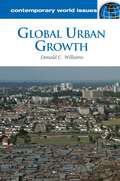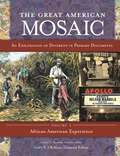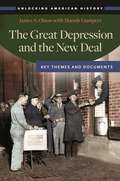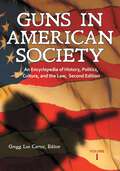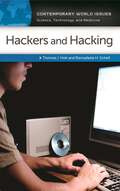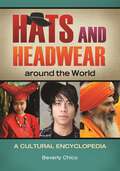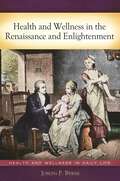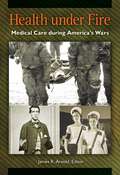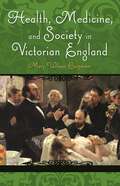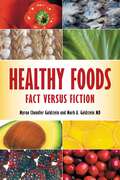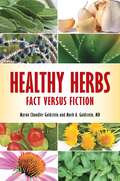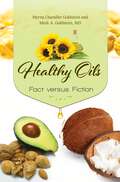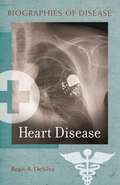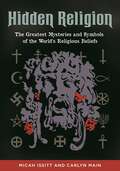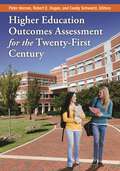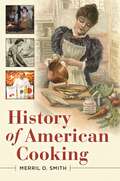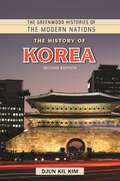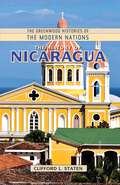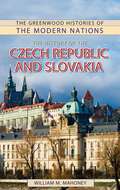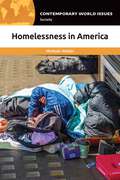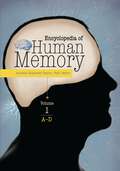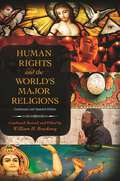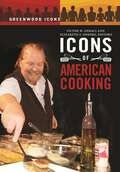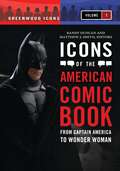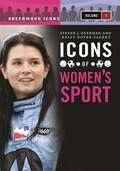- Table View
- List View
Global Urban Growth: A Reference Handbook (Contemporary World Issues)
by Donald C. Ph.D.This book examines the rapid expansion of urban areas worldwide, especially within the previous 50 years, identifying the factors that have contributed to this phenomenon and exploring its many consequences.Global Urban Growth: A Reference Handbook examines urbanization and the challenges associated with rapid urban growth and urban sprawl from a truly global perspective, rather than presenting only a limited exploration of the subject by addressing a single city, country, or region. Investigating urbanization and related policy challenges as both a general phenomenon of all modern societies and one that varies greatly in different regions of the world, the book charts different growth trajectories in these societies and varying policy responses. Significant variations in culture, historical background, economic factors, and political and social development are considered. A chapter on the United States and Canada documents how urbanization trends have occurred in North America and presents our policy approaches in comparison and contrast with the rest of the world. The author offers a balanced overview by marshaling the facts and clearly presenting both the benefits and the drawbacks for readers.
The Great American Mosaic [4 volumes]: An Exploration of Diversity in Primary Documents [4 volumes]
by Gary Y. OkihiroFirsthand sources are brought together to illuminate the diversity of American history in a unique way—by sharing the perspectives of people of color who participated in landmark events.This invaluable, four-volume compilation is a comprehensive source of documents that give voice to those who comprise the American mosaic, illustrating the experiences of racial and ethnic minorities in the United States. Each volume focuses on a major racial/ethnic group: African Americans, American Indians, Asian Americans and Pacific Islanders, and Latinos. Documents chosen by the editors for their utility and relevance to popular areas of study are organized into chronological periods from historical to contemporary. The collection includes eyewitness accounts, legislation, speeches, and interviews. Together, they tell the story of America's diverse population and enable readers to explore historical concepts and contexts from multiple viewpoints. Introductions for each volume and primary document provide background and history that help students understand and critique the material. The work also features a useful primary document guide, bibliographies, and indices to aid teachers, librarians, and students in class work and research.
The Great Depression and the New Deal: Key Themes and Documents (Unlocking American History)
by James S. Olson Mariah GumpertIntended for AP-focused American history high school students, this book supplies a complete quick reference source and study aide on the Great Depression and New Deal in America, covering the key themes, events, people, legislation, economics, and policies.The Great Depression and the New Deal remain key topics in American History that come up often as testing subject material. This book—comprising an introduction, encyclopedic A–Z entries, a chronology, thematic tagging, more than a dozen primary sources, Advanced Placement (AP) exam resources, and a bibliography—provides a complete resource for studying the themes, events, people, legislation, economics, and policy of the Great Depression and New Deal in America. It is ideally suited as a study resource for high school students studying to take the AP U.S. history course as well as undergraduates taking an introductory U.S. History survey course.The Great Depression and the New Deal: Key Themes and Documents supplies an easy-to-use guide to the central concepts, themes, and events of a pivotal era in American history that presents the Great Depression and New Deal in 10 thematic categories. While the focus of this book is on the AP course content itself rather than on the exam, it also features exam preparation-specific content, such as a sample documents-based essay question, a list of "Top Tips" for answering documents-based essay questions, and period-specific learning objectives that are in alignment with the new fall 2014 AP U.S. History curriculum framework.
Guns in American Society [3 volumes]: An Encyclopedia of History, Politics, Culture, and the Law [3 volumes]
by Gregg Lee CarterThoroughly updated and greatly expanded from its original edition, this three-volume set is the go-to comprehensive resource on the legal, social, psychological, political, and public health aspects of guns in American life.The landmark 2002 edition of Guns in American Society: An Encyclopedia of History, Politics, Culture, and the Law was acclaimed for helping readers get beyond the sometimes overheated rhetoric and navigate the overwhelming amount of unbiased academic research on gun-related issues. Now, in light of the steady rate of gun violence and several high-profile shooting incidents, this extraordinary three-volume work returns in a timely and thoroughly updated edition.With over 100 new entries, the latest edition of Guns in American Society is the most current resource available on all aspects of the gun issue, including rates of violence, gun control, gun rights, regulations and legislation, court decisions, pro- and anti-gun organizations, gun ownership, hunters and collectors, public opinion toward guns, and much more. With expert contributions from the fields of criminology, history, law, medicine, politics, and social science, it gives students, journalists, policymakers, and researchers a foundation for their own investigations, while helping readers of all kinds make decisions as family members, potential gun owners, and voters.
Hackers and Hacking: A Reference Handbook (Contemporary World Issues)
by Thomas J. Holt Bernadette H. SchellThis book provides an in-depth exploration of the phenomenon of hacking from a multidisciplinary perspective that addresses the social and technological aspects of this unique activity as well as its impact.What defines the social world of hackers? How do individuals utilize hacking techniques against corporations, governments, and the general public? And what motivates them to do so? This book traces the origins of hacking from the 1950s to today and provides an in-depth exploration of the ways in which hackers define themselves, the application of malicious and ethical hacking techniques, and how hackers' activities are directly tied to the evolution of the technologies we use every day.Rather than presenting an overly technical discussion of the phenomenon of hacking, this work examines the culture of hackers and the technologies they exploit in an easy-to-understand format. Additionally, the book documents how hacking can be applied to engage in various forms of cybercrime, ranging from the creation of malicious software to the theft of sensitive information and fraud—acts that can have devastating effects upon our modern information society.
Hats and Headwear around the World: A Cultural Encyclopedia
by Beverly ChicoThis concise encyclopedia examines headwear around the world, from ancient times to the modern era, comprising entries that address cultural significance, religion, historical events, geography, demographic and ethnic issues, fashion, and contemporary trends.Are feathers from endangered bird species still commonly used on hats? Why do many Muslim women cover their heads? How has advancing technology influenced modern headwear? This concise encyclopedia provides the answers to these questions and many more regarding headwear and human culture in its examination of headwear around the world. It examines topics from ancient times to the modern era, providing not only detailed physical descriptions and historical facts but also information that addresses cultural significance, religion, historical events, geography, demographic and ethnic issues, fashion, and contemporary trends. The entries reveal fascinating insights into headwear as historical, aesthetic, fashion, utilitarian, mystical, and symbolic apparel, and supplies comprehensive analyses of hats across the globe unavailable in the existing literature.
Health and Wellness in the Renaissance and Enlightenment (Health and Wellness in Daily Life)
by Joseph P. ByrneExamining a 300-year period that encompasses the Scientific Revolution, this engrossing book offers a fresh and clearly organized discussion of the human experience of health, medicine, and health care, from the Age of Discovery to the era of the French Revolution.Health and Wellness in the Renaissance and Enlightenment compares and contrasts health care practices of various cultures from around the world during the vital period from 1500 to 1800. These years, which include the Age of Discovery and the Scientific Revolution, were a period of rapid advance of both science and medicine. New drugs were developed and new practices, some of which stemmed from increasingly frequent contact between various cultures, were initiated.Examining the medical systems of Europe, Asia, Africa, and the colonial world, this comprehensive study covers a wide array of topics including education and training of medical professionals and the interaction of faith, religion, and medicine. The book looks specifically at issues related to women's health and the health of infants and children, at infectious diseases and occupational and environmental hazards, and at brain and mental disorders. Chapters also focus on advances in surgery, dentistry, and orthopedics, and on the apothecary and his pharmacopoeia.
Health under Fire: Medical Care during America's Wars
by James R. ArnoldThis historical reference highlights the people, diseases, and innovations that have impacted the health of soldiers and civilians during wartime, focusing on U.S. conflicts from early colonial skirmishes to the current War on Terror.This intriguing text examines the connections between war and health, addressing both the good and bad aspects of this relationship and tracing the evolution of medical practice under its influence. The work features 12 American military operations—from the Revolutionary War to the American Indian Wars to the Spanish-American War to the current War on Terror—and offers insight into the conflicts' contributions to medical advances as well as the unique health challenges presented during battles of the time. From George Washington's decision to inoculate his troops against smallpox to the development of modern plastic surgery techniques to treat disfigured World War I veterans, this valuable work illustrates the progression of medical practice from trial and error to scientific management. Cross-disciplinary essays profile each of the wars, and alphabetical entries cover such topics as the use of biological weapons, federal responsibility for veterans, and the influence of sickness and disease on military affairs.
Health, Medicine, and Society in Victorian England (Victorian Life and Times)
by Mary Wilson CarpenterThis work offers a social and cultural history of Victorian medicine "from below," as experienced by ordinary practitioners and patients, often described in their own words.Health, Medicine, and Society in Victorian England is a human story of medicine in 19th-century England. It's a story of how a diverse and competitive assortment of apothecary apprentices, surgeons who learned their trade by doing, and physicians schooled in ancient Greek medicine but lacking in any actual experience with patients, was gradually formed into a medical profession with uniform standards of education and qualification. It's a story of how medical men struggled with "new" diseases such as cholera and "old" ones known for centuries, such as tuberculosis, syphilis, and smallpox, largely in the absence of effective drugs or treatments, and so were often reduced to standing helplessly by as their patients died. It's a story of how surgeons, empowered first by anesthesia and later by antiseptic technique, vastly expanded the field of surgery—sometimes with major benefits for patients, but sometimes with disastrous results. Above all, it's a story of how gender and class ideology dominated both practitioners and patients. Women were stridently excluded from medical education and practice of any kind until the end of the century, but were hailed into the new field of nursing, which was felt to be "natural" to the gentler sex. Only the poor were admitted to hospitals until the last decades of the century, and while they often received compassionate care, they were also treated as "cases" of disease and experimented upon with freedom. Yet because medical knowledge was growing by leaps and bounds, Victorians were fascinated with this new field and wrote novels, poetry, essays, letters, and diaries, which illuminate their experience of health and disease for us. Newly developed techniques of photography, as well as improved print illustrations, help us to picture this fascinating world. This vivid history of Victorian medicine is enriched with many literary examples and visual images drawn from the period.
Healthy Foods: Fact versus Fiction
by Myrna Chandler Goldstein Mark A. MDThis book presents research findings about 50 foods that are commonly touted as healthy and educates readers about the medical problems they purportedly alleviate or help prevent.It is always in the best interest of those who market foods to make grandiose claims regarding their nutritional value, regardless of whether actual scientific proof exists to support such a claim. Even diligent and educated consumers often have difficulty discerning facts from mere theory or pure marketing hype.As the incidence of childhood obesity in the United States continues to increase at an alarming rate and food costs skyrocket, this book arrives at a perfect time for health-conscious consumers, providing an authoritative reference for anyone looking to make wise eating decisions at home, work, school, or in restaurants. Healthy Foods: Fact versus Fiction is the result of a collaborative effort between a medical doctor and an award-winning journalist and author on nutrition. This book provides actual research findings to shed light on the true benefits of the most popular health foods—and in some cases, debunk misconceptions surrounding certain foods.
Healthy Herbs: Fact versus Fiction
by Myrna Chandler Goldstein Mark A. MDConsolidating unbiased, peer-reviewed information from many sources, this book provides a one-stop resource on the use and health benefits of 50 different herbs.While the use of herbs and herbal supplements seem an attractive alternate to man-made therapies, such use is often inspired by anecdotal evidence rather than sound clinical research. Healthy Herbs: Fact versus Fiction examines the health claims associated with 50 popular herbs and coalesces the clinical findings on these natural substances. This useful resource examines the history and use of herbs and will ultimately help readers make informed decisions regarding these natural therapies.The findings in the book are culled from credible sources such as international, peer-reviewed journals, providing nomenclature, history, common usage, effectiveness, and additional suggested reading on selected herbs and herbal supplements. Rather than advocating for or against alternative medicine or herb use, the book provides authoritative, unbiased, and evidence-based information so the health conscious can make informed decisions for themselves.
Healthy Oils: Fact versus Fiction
by Myrna Chandler Goldstein Mark A. MDUsed in moderation, many oils can be beneficial to one's diet and lifestyle. This book presents accurate information on more than two dozen oils, examining the health claims associated with popular oils along with the clinical research findings.In the past, consumers were warned to avoid eating foods made with coconut oil, but more recently opinions about this oil have shifted. Many people now consider olive oil to be the most healthful—but is there truth behind this idea? Today's consumers are constantly bombarded with claims regarding consumption of oils, yet references to the scientific studies assumedly behind these statements are rare. This book dispels the common myths about oils, examines the health claims associated with popular oils and fats, and presents useful information backed by scientific findings. The book's 47 entries cover common oils such as canola and olive oil to less commonly used oils, such as argan, avocado, and krill oil. The research results are gathered from international, peer-reviewed journals, providing readers with information from credible sources. An ideal resource for nutritionists, nutrition students, and anyone seeking scientifically backed information about the health benefits of oils, Healthy Oils: Fact versus Fiction serves as an indispensible tool for making informed health decisions.
Heart Disease (Biographies of Disease)
by Regis A. SilvaDisease conditions that affect the human heart and the methods used to diagnose and treat them are all covered in one concise volume.Written by a past president of the Boston Chapter of the American Heart Association, Heart Disease is a comprehensive account of the leading cause of death in the West. Sequential chapters describe the structure and function of the heart, the various disease states, and the treatments for each major disease. In addition, the book examines the vast array of diagnostic tests and the most advanced treatments available, from basic drugs for prevention such as aspirin to transplants and artificial hearts.Dr. de Silva, who teaches at Harvard Medical School, also covers historical aspects of heart disease, discoveries about the structure and function of the heart, and the ways in which heart disease can be diagnosed and treated. Underlying conditions that affect the heart are described and linked to the treatments and devices used to correct disease conditions.
Hidden Religion: The Greatest Mysteries and Symbols of the World's Religious Beliefs
by Micah Issitt Carlyn MainCovering secret societies, mysterious ancient traditions, and the often-mistaken history of the world's religious symbols, this book takes readers on a tour through the fascinating world of religious symbolism and reveals the most mysterious and misunderstood facets of religion.Hidden Religion: The Greatest Mysteries and Symbols of the World's Religious Beliefs not only explores the history and origins of widely recognizable symbols, like the Christian cross and the Star of David, but also introduces readers to more obscure symbols from religious traditions around the world—even defunct ones like those of the ancient Aztec and Mayan societies. In addition, the book discusses the "religious secrets" found in the major religions, including secret societies of Christianity, Judaism, Islam, and Buddhism.Containing more than 170 entries, the encyclopedia is organized by religious category, such as Abrahamic, East Asian, and African Diasporic religions, then alphabetically within each category. Each entry is prefaced with a short introduction that explains where and when the religious tradition originated and describes the religion today. This information is followed by an analysis of the historical development and use of symbols along with an explanation of connections between symbols used by different religions, such as shared astrological symbolism in the form of moon, sun, or star motifs.
Higher Education Outcomes Assessment for the Twenty-First Century
by Peter Hernon, Robert E. Dugan, and Candy SchwartzThis book discusses recent trends in outcomes assessment, examines how state governments are reshaping the national discussion with higher education, and explains how libraries must respond to these changes.Higher Education Outcomes Assessment for the Twenty-first Century focuses on recent developments in outcomes assessment, especially from the perspectives of the federal government and state governments, as well as foundations concerned about the state of higher education. The authors identify the significant changes that these stakeholders call for—information that academic librarians and anyone following outcomes assessment need to be aware of—and interpret the discussions to identify implications for libraries.Building upon the foundation of knowledge presented in the previous two Libraries Unlimited Outcomes Assessment in Higher Education titles, this book provides readers with up-to-date coverage of topics such as the emerging metrics used to define student and institutional success; the increased importance of accountability and the need to compare and assess the performance of programs and institutions rather than individual courses; and the shift in prioritizing student outcomes over student learning outcomes. The authors also spotlight the critical need for libraries to fit their role within the national discussion and suggest ways in which library managers and directors can play a role in redirecting the discussion to their benefit.
History of American Cooking
by Merril D. SmithIdeal for American history and food history students as well as general readers, this book spans 500 years of cooking in what is now the United States, supplying recipes and covering the "how" and "why" of eating.This book examines the history and practice of cooking in what is now the United States from approximately the 15th century to the present day, covering everything from the hot-stone cooking techniques of the Nootka people of the Pacific Northwest to the influence of Crisco—a shortening product intended as a substitute for lard—upon American cooking in the 20th century. Learning how American cooking has evolved throughout the centuries provides valuable insights into life in the past and offers hints to our future.The author describes cooking methods used throughout American history, spotlighting why particular methods were used and how they were used to produce particular dishes. The historical presentation of information will be particularly useful to high school students studying U.S. history and learning about how wartime and new technology affects life across society. General readers will enjoy learning about the topics mentioned above, as well as the in-depth discussions of such dishes as fried chicken, donuts, and Thanksgiving turkey. Numerous sample recipes are also included.
The History of Korea (The Greenwood Histories of the Modern Nations)
by Djun Kil KimThis revised edition examines North and South Korea's political, socio-economic, and cultural history from the Neolithic period to the early 21st century, including issues of recent political unrest and preparations for the 2018 Winter Olympics.Korea continues to be featured in the news, especially after the succession of Kim Jong-un as leader of North Korea and his threats of nuclear attack. Yet the reported instability of the North is contrasted by the rapid modernization revolution of the South. Author Djun Kil Kim analyzes how tragic experiences in the regions' collective history—particularly Japanese colonial rule and the division of the country—have contributed to the dichotomous state of affairs in the Koreas.This comprehensive overview traces the development of two contradistinctive nations—North and South Korea—with communism in the north and democracy and industrialization in the south transforming the geopolitical and geo-economic condition of each area. Author Kim explores specific doctrines that revolutionized Korea: Buddhism and Neo-Confucianism in the mid-7th and the late 14th centuries; and communism and American functionalism in the 20th century. The second edition includes an updated timeline, new biographical sketches of notable people, and an additional chapter covering the events of 2004 through the present day.
The History of Nicaragua (The Greenwood Histories of the Modern Nations)
by Clifford L. StatenThis concise history of Nicaragua provides the reader with a history of the ways in which key political and economic factors have contributed to the creation of the modern nation.Notwithstanding Nicaraguan President Daniel Ortega's disdain for the United States, our nation has played a significant role in shaping Nicaraguan nationalism, as well as the country's political, economic, and social systems. The History of Nicaragua was written, in part, to help students and other interested readers understand that relationship, providing them with an up-to-date, concise, and analytical history of the Central American nation. The book begins by describing the people, geography, culture, and current political, economic, and social systems of Nicaragua. The remainder of the volume is devoted to a chronological history, emphasizing recurring themes or factors that have shaped the modern state. These include the importance of elite families such as the Somoza dynasty that ruled for more than 40 years. Other topics include the agro-export model of economic development, modern Nicaraguan nationalism, the Sandinista revolution and its legacy, and the democratic transition that began in 1990.
The History of the Czech Republic and Slovakia (The Greenwood Histories of the Modern Nations)
by William MahoneyThis survey of Czech and Slovak history traces the development of two neighboring peoples through the creation of a common Czechoslovakian state in 1918 to the founding of the independent Czech and Slovak Republics in 1993 and beyond.The History of the Czech Republic and Slovakia charts historical developments in the two nations to the opening decade of the 21st century. The book begins with an overview of the geography, climate, people, economy, and government of both the Czech and Slovak republics. Subsequent chapters offer a chronologically organized survey of historical events, trends, ideas, and people.Starting with the early Slavic settlements around the 5th century AD, the book explores Czech and Slovak history through the Middle Ages, the Renaissance and Early Modern eras, the Enlightenment, and the age of nationalism and revolution. Chapters on the 20th century include discussion of the World Wars, the interwar Czechoslovak state, the Communist decades, the Prague Spring, and the Velvet Revolution of 1989. The story is brought up to date with insights into developments in the independent Czech and Slovak republics since 1993.
Homelessness in America: A Reference Handbook (Contemporary World Issues)
by Michele WakinThis title provides a one-stop resource for understanding the crisis of homelessness in the United States. It covers risk factors for homelessness, societal attitudes about the homeless, and public and private resources designed to prevent homelessness and help those in need.There are a number of questions to be answered when addressing the subject of homelessness in the United States. What are the primary causes of homelessness? What are the economic and socioeconomic factors that have an impact on homeless people? What demographic trends can be identified in homeless populations? Is the U.S. addressing the needs and concerns of homeless people adequately? Where are the areas with the highest homeless populations? What can be done to help homeless people who live with mental illness and/or addiction problems?Homelessness in America: A Reference Handbook answers all of these questions and more. It thoroughly examines the history of homelessness in the U.S., shining a light on the key issues, events, policies, and attitudes that contribute to homelessness and shape the experience of being homeless. It places special emphasis on exploring the myriad problems that force people into homelessness, such as inadequate levels of affordable housing, struggles with substance abuse, and gaps in the U.S.' social welfare system. In addition, it explains why some demographic groups are at heightened risk of homelessness.
Encyclopedia of Human Memory [3 volumes]: [3 volumes]
by Annette Kujawski Taylor Rachel Blaser Nicola J. Broadbent Kelly Correa Veronica Galván Soyun Kim Kristin Mauldin Christine N. SmithProviding clear, comprehensible information for general readers, this three-volume, A–Z encyclopedia covers the major theories and findings associated with our understanding of human memory and some of the crippling disorders associated with memory malfunction.This encyclopedia comprehensively addresses one of the most critical components of human intelligence—memory. Comprising approximately 500 A–Z entries written by experts who have studied memory and its impacts, the work defines complex terminology for lay readers and includes answers to the most common questions regarding human memory. Readers will gain an understanding of the various psychological and physiological systems of memory, such as short-term or procedural memory; comprehend the principles that underlie effective encoding, storage, and construction of memories; and learn the truth about often misconceptualized conditions like "amnesia" or how our memories are stored in bits and pieces rather than linearly like a recorded tape or video.This set is ideal for high school students writing term papers or studying for advanced examinations such as Advanced Placement (AP) in psychology. The volumes also provide a breadth of information invaluable to family members, friends, and caretakers of individuals who suffer from various memory disorders, including descriptions of major disorders, explanations of specific memory deficits, strategies for memory improvement, and information on the parts of the brain that access and store memory as well as the types of tests used to assess memory loss. Also included are biographies of key contributors to the field of cognitive psychology, and to the area of memory in particular.
Human Rights and the World's Major Religions: Condensed And Updated Edition
by William H. BrackneyBased on the celebrated five-volume set published in 2005, this updated one-volume edition offers readers a concise yet complete understanding of the interplay between the major religions and human rights.In a world where religious beliefs have become inseparable from the events of the day, ranging from the ongoing strife in the Middle East to cases of sexual abuse by clergy and controversy over circumcision laws in Europe, this is an invaluable work. It offers readers a comprehensive examination of the way the world's five major faiths—Judaism, Christianity, Islam, Hinduism, and Buddhism—view and have viewed human rights from ancient times to the present. An overview of each tradition is provided, followed by chapters that show how human rights have been shaped and understood in the tradition from the earliest textual evidence to the contemporary era.Considering the differences among religious traditions globally, the book shows how each faith advanced the cause of human rights in unique ways. Contributors track the development of ideas, opinions, and issues, documenting both the advancement and violation of human rights in the name of religion. Demonstrating that human rights discourse cannot be divorced from religious history and experience, the book covers such issues as the right to life, the rights of women, punishment for crimes, war and peace, slavery, and violence.
Icons of American Cooking (Greenwood Icons)
by Victor W. Geraci Elizabeth S. Demers, EditorsDiscover how these contemporary food icons changed the way Americans eat through the fascinating biographical profiles in this book.Before 1946 and the advent of the first television cooking show, James Beard's I Love to Eat, not many Americans were familiar with the finer aspects of French cuisine. Today, food in the United States has experienced multiple revolutions, having received—and embraced—influences from not only Europe, but cultures ranging from the Far East to Latin America. This expansion of America's appreciation for food is largely the result of a number of well-known food enthusiasts who forever changed how we eat. Icons of American Cooking examines the giants of American food, cooking, and cuisine through 24 biographical profiles of contemporary figures, covering all regions, cooking styles, and ethnic origins. This book fills a gap by providing behind-the-scenes insights into the biggest names in American food, past and present.
Icons of the American Comic Book [2 volumes]: From Captain America to Wonder Woman [2 volumes] (Greenwood Icons)
by Randy Duncan and Matthew J. SmithThis book explores how the heroes and villains of popular comic books—and the creators of these icons of our culture—reflect the American experience out of which they sprang, and how they have achieved relevance by adapting to, and perhaps influencing, the evolving American character.Multiple generations have thrilled to the exploits of the heroes and villains of American comic books. These imaginary characters permeate our culture—even Americans who have never read a comic book grasp what the most well-known examples represent. But these comic book characters, and their creators, do more than simply thrill: they make us consider who we are and who we aspire to be.Icons of the American Comic Book: From Captain America to Wonder Woman contains 100 entries that provide historical background, explore the impact of the comic-book character on American culture, and summarize what is iconic about the subject of the entry. Each entry also lists essential works, suggests further readings, and contains at least one sidebar that provides entertaining and often quirky insight not covered in the main entry. This two-volume work examines fascinating subjects, such as how the superhero concept embodied the essence of American culture in the 1930s; and the ways in which comic book icons have evolved to reflect changing circumstances, values, and attitudes regarding cultural diversity. The book's coverage extends beyond just characters, as it also includes entries devoted to creators, publishers, titles, and even comic book related phenomena that have had enduring significance.
Icons of Women's Sport [2 volumes]: [2 volumes] (Greenwood Icons)
by Kelly Boyer Sagert Steven J. OvermanThis collection of fascinating biographies of outstanding women athletes past and present including superstars such as Nadia Comaneci, Mia Hamm, Jackie-Joyner Kersee, Danica Patrick, and Serena and Venus Williams.Icons of Women's Sport identifies and examines the individuals who have impacted history, challenged the status quo, influenced sport culture, and garnered wide public interest. Including stars from the past and present, ranging from Babe Didrikson Zaharias and Billie Jean King to Dara Torres and Venus and Serena Williams, the featured athletes are iconic not only because of their achievements in the sports arena, but also because of their contributions to society: advancing cultural diversity and gender equity, breaking class barriers, and transcending stereotypes. The book contains biographies of 36 women athletes—American and international—who excelled in competitive sports from the post-World War I era through the modern era in a dozen different sports. Icons of Women's Sport spotlights athletes across a wide range of women's sports, with appropriate attention given to the major sports. Readers will enjoy learning about stars from both amateur and professional sports arenas, including Olympic athletes, as well as female competitors who have reached the top of their game in newer arenas such as golf and snowboarding.
